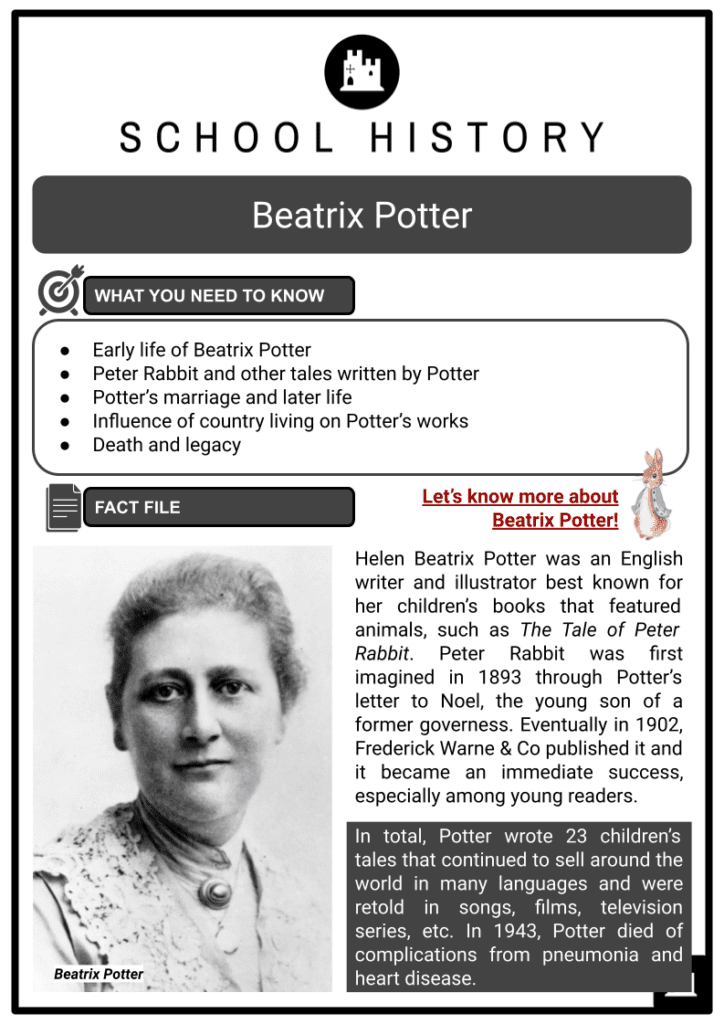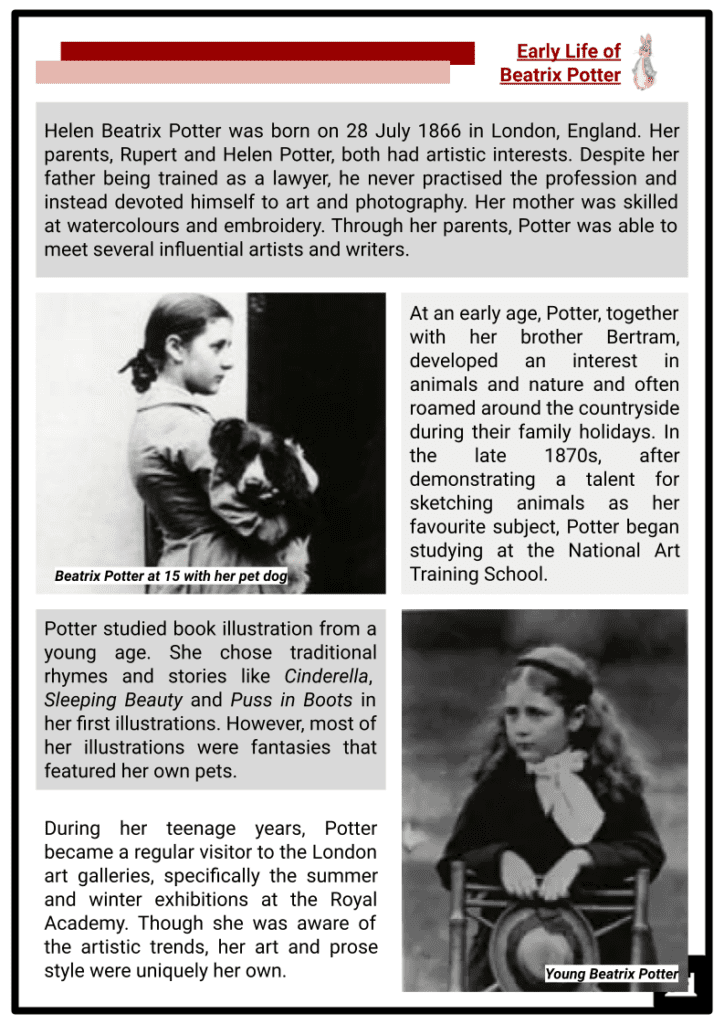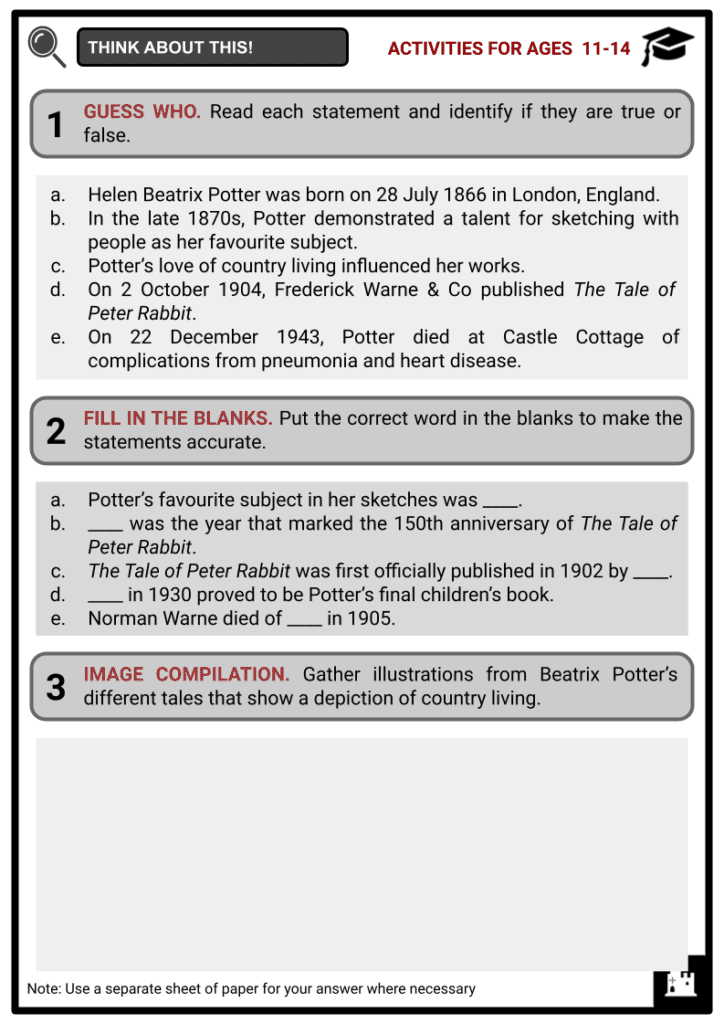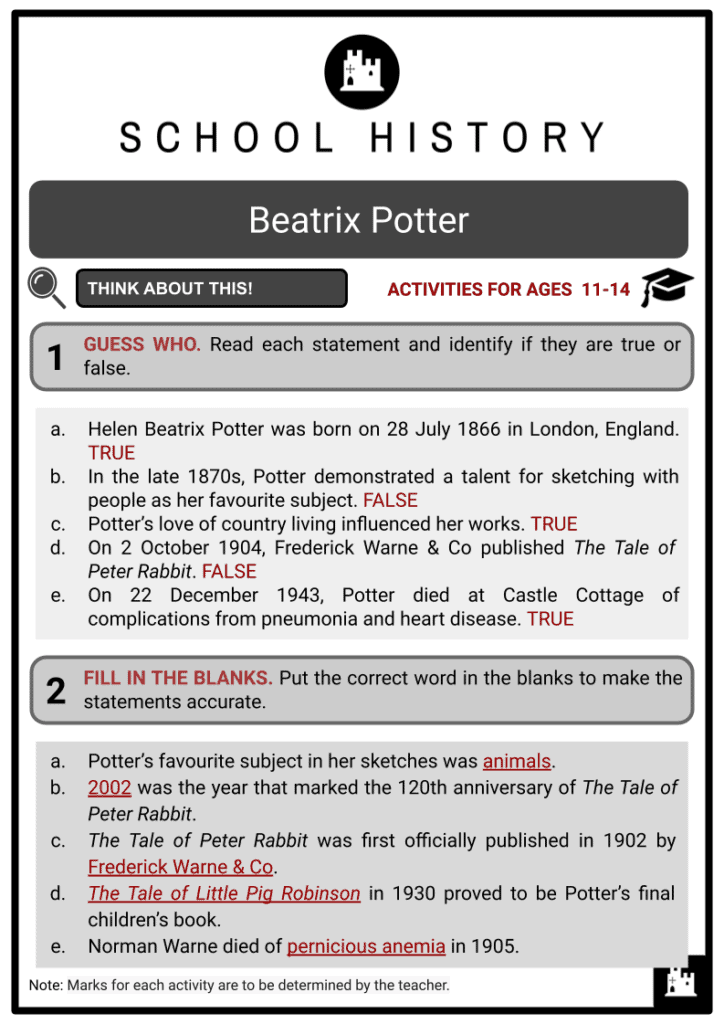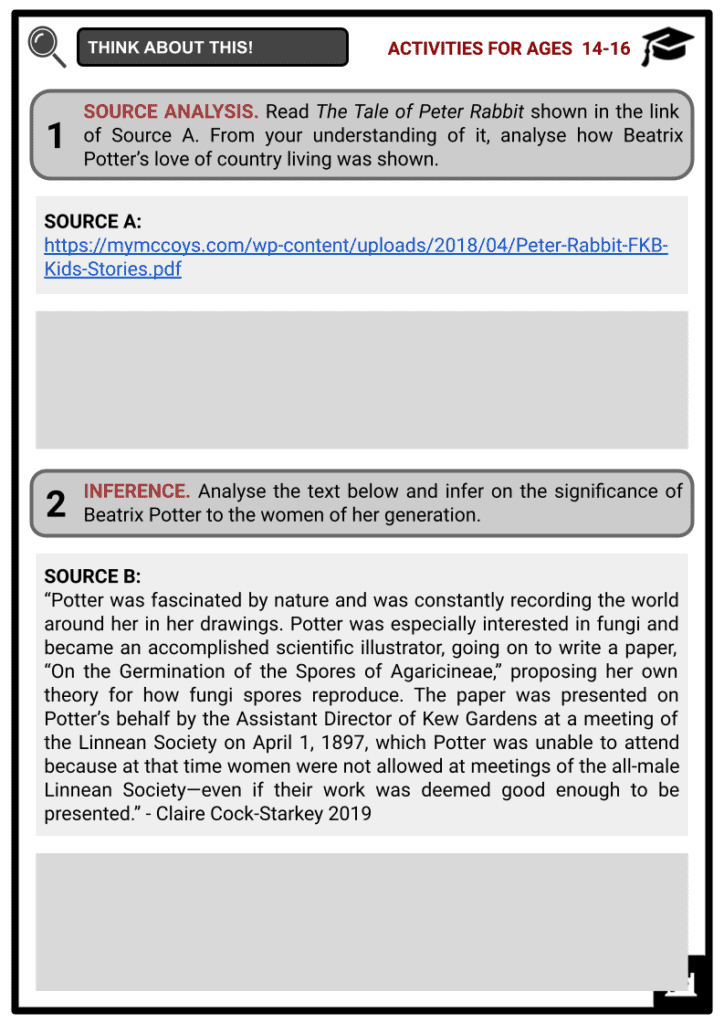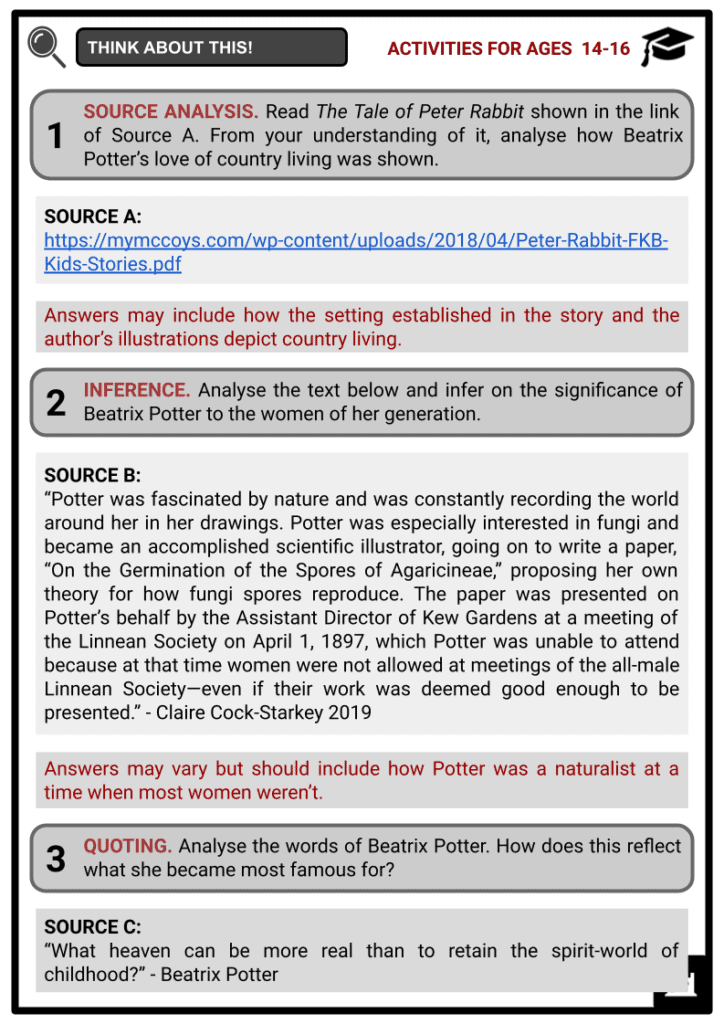Download Beatrix Potter Worksheets
Do you want to save dozens of hours in time? Get your evenings and weekends back? Be able to teach about Beatrix Potter to your students?
Our worksheet bundle includes a fact file and printable worksheets and student activities. Perfect for both the classroom and homeschooling!
Summary
- Early life of Beatrix Potter
- Peter Rabbit and other tales written by Potter
- Potter’s marriage and later life
- Influence of country living on Potter’s works
- Death and legacy
Key Facts And Information
Let’s know more about Beatrix Potter!
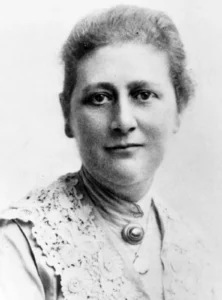
Helen Beatrix Potter was an English writer and illustrator best known for her children’s books that featured animals, such as The Tale of Peter Rabbit. Peter Rabbit was first imagined in 1893 through Potter’s letter to Noel, the young son of a former governess. Eventually, in 1902, Frederick Warne & Co published it, and it became an immediate success, especially among young readers. In total, Potter wrote 23 children’s tales that continued to sell around the world in many languages and were retold in songs, films, television series, etc. In 1943, Potter died of complications from pneumonia and heart disease.
Early Life of Beatrix Potter
- Helen Beatrix Potter was born on 28 July 1866 in London, England. Her parents, Rupert and Helen Potter, both had artistic interests. Despite her father being trained as a lawyer, he never practised the profession and instead devoted himself to art and photography. Her mother was skilled at watercolours and embroidery. Through her parents, Potter was able to meet several influential artists and writers.
- At an early age, Potter, together with her brother Bertram, developed an interest in animals and nature and often roamed around the countryside during their family holidays. In the late 1870s, after demonstrating a talent for sketching animals as her favourite subject, Potter began studying at the National Art Training School.
- Potter studied book illustration from a young age. She chose traditional rhymes and stories like Cinderella, Sleeping Beauty, and Puss in Boots in her first illustrations. However, most of her illustrations were fantasies that featured her own pets.
- During her teenage years, Potter became a regular visitor to the London art galleries, specifically the summer and winter exhibitions at the Royal Academy. Though she was aware of the artistic trends, her art and prose style was uniquely her own.
Peter Rabbit and Other Tales
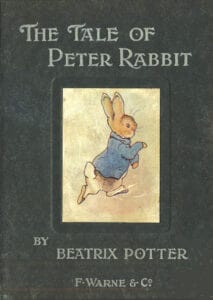
In the 1890s, Potter and Bertram designed and printed occasional greeting cards as a means to earn money. Her most famous work was The Tale of Peter Rabbit. This actually began as a story that she wrote in a letter to Noel, the young son of a former governess. She later transformed the letter and privately published it as a book.
- On 2 October 1902, Frederick Warne & Co published The Tale of Peter Rabbit. It was an immediate success, especially among young readers. More animal adventures soon followed, including The Tale of Squirrel Nutkin and The Tale of Benjamin Bunny.
- Potter’s vivid illustrations, rural countryside depictions, and qualities she created for her animal characters are behind the immense popularity of her works. In addition, her stories were non-didactic, meaning they did not intend to teach or to convey information, which was a fairly new idea in children’s literature and the reason it was favoured by young readers.
- As early as 1903, Potter also made and patented a Peter Rabbit doll. This was soon followed by other ‘spin-off’ merchandise over the years, which included board games, figurines, china tea sets, and painting books, among other things. All were licensed by Frederick Warne & Co and earned Potter an independent income and a huge wave of profits for her publisher.
Marriage and Later Life
- Potter and Norman Warne became unofficially engaged in 1905. However, the engagement was short-lived as Warne died of pernicious anemia that same year. Using her income and a small inheritance from an aunt, Potter bought Hill Top Farm in Near Sawrey in the English Lake District near Windermere. It was supposed to be her holiday home with Warne.
- Potter often visited Hill Top Farm, and her delight in country living influenced several of her works written during this period, such as The Tale of Ginger and Pickles and The Tale of Mrs Tittlemouse. It was at Hill Top that Potter met William Heelis, a local solicitor from Hawkshead. In 1912, Heelis proposed, and Potter accepted. On 15 October 1913, they got married at St Mary Abbots in Kensington.
-
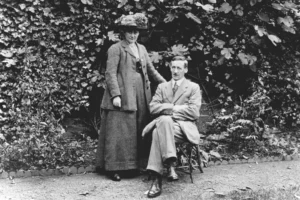
William Heelis and Beatrix Potter The couple moved to Near Sawrey and lived at Castle Cottage, a renovated farmhouse on Castle Farm. Hill Top was later renovated to accommodate a tenant family and Potter’s private studio and workshop. Her works that reflect her enjoyment of farming life are The Tale of Jemima Puddle-Duck and The Tale of Tom Kitten.
- When Potter’s father Rupert died during the outbreak of World War I in 1914, Potter was already a wealthy woman. She established a Nursing Trust for local villages, fully participating in country life. Though she continued to write stories for Frederick Warne & Co, after a while, she focused much of her attention on her farms and land preservation in the Lake District. The Tale of Little Pig Robinson in 1930 proved to be her final children’s book.
Death and Legacy
- On 22 December 1943, Potter died at Castle Cottage of complications from pneumonia and heart disease. Her remains were cremated at Carleton Crematorium. Potter’s land holdings of 15 farms and over 4,000 acres were left to the National Trust. Her charming tales and illustrations continue to gain recognition even after her death.
- The copyright to Potter’s stories and merchandise was given to her publisher Frederick Warne & Co, which is now a division of the Penguin Group. This copyright expired on 1 January 2014, after the 70-years-after-death limit. Hill Top Farm was opened to the public in 1946. Potter’s artworks were displayed there until 1985, when they were moved to William Heelis’ Hawkshead law offices.
- Before her death, Potter handed her folios and mycological drawings to the Armitt Library and Museum in Ambleside. Her stories were owned by different galleries and publishers: The Tale of Peter Rabbit by Frederick Warne and Co, The Tale of the Flopsy Bunnies by the British Museum, and The Tailor of Gloucester by the Tate Gallery. The Leslie Linder Bequest and Leslie Linder Collection were the largest public collections of Potter’s letters and drawings. They are located at the Victoria and Albert Museum in London.
- In 1991, the World of Beatrix Potter Attraction, which recreated Potter’s stories, opened in the Lake District. The year after, an animated series called The World of Peter Rabbit and Friends was launched on television. 2018 saw Peter Rabbit’s first blockbuster on the big screen. A sequel followed two years later.
- In 2016, limited edition products were released commemorating the 150th birthday of Potter. 2022 marked 120 years since The Tale of Peter Rabbit was first officially published.

